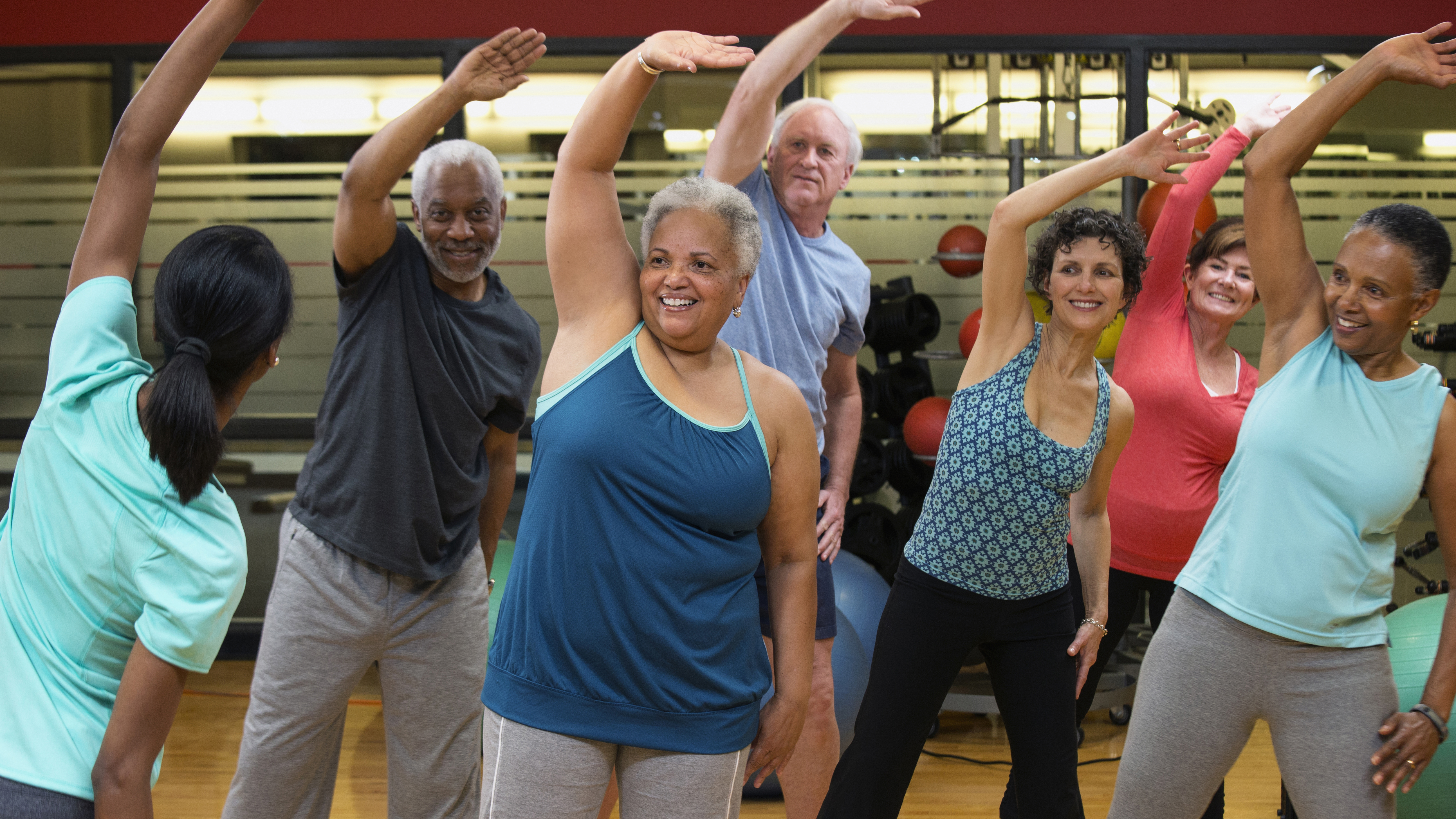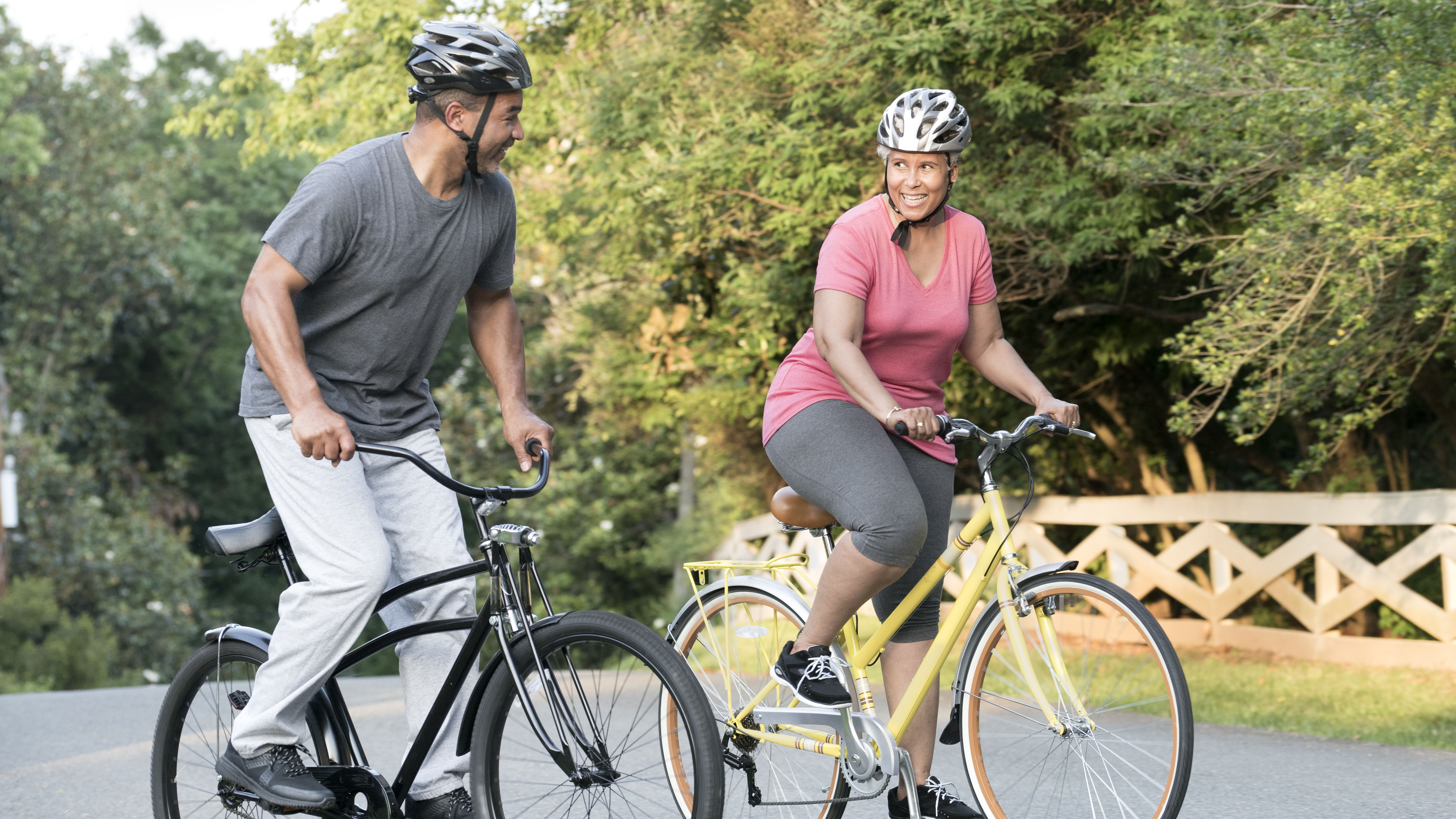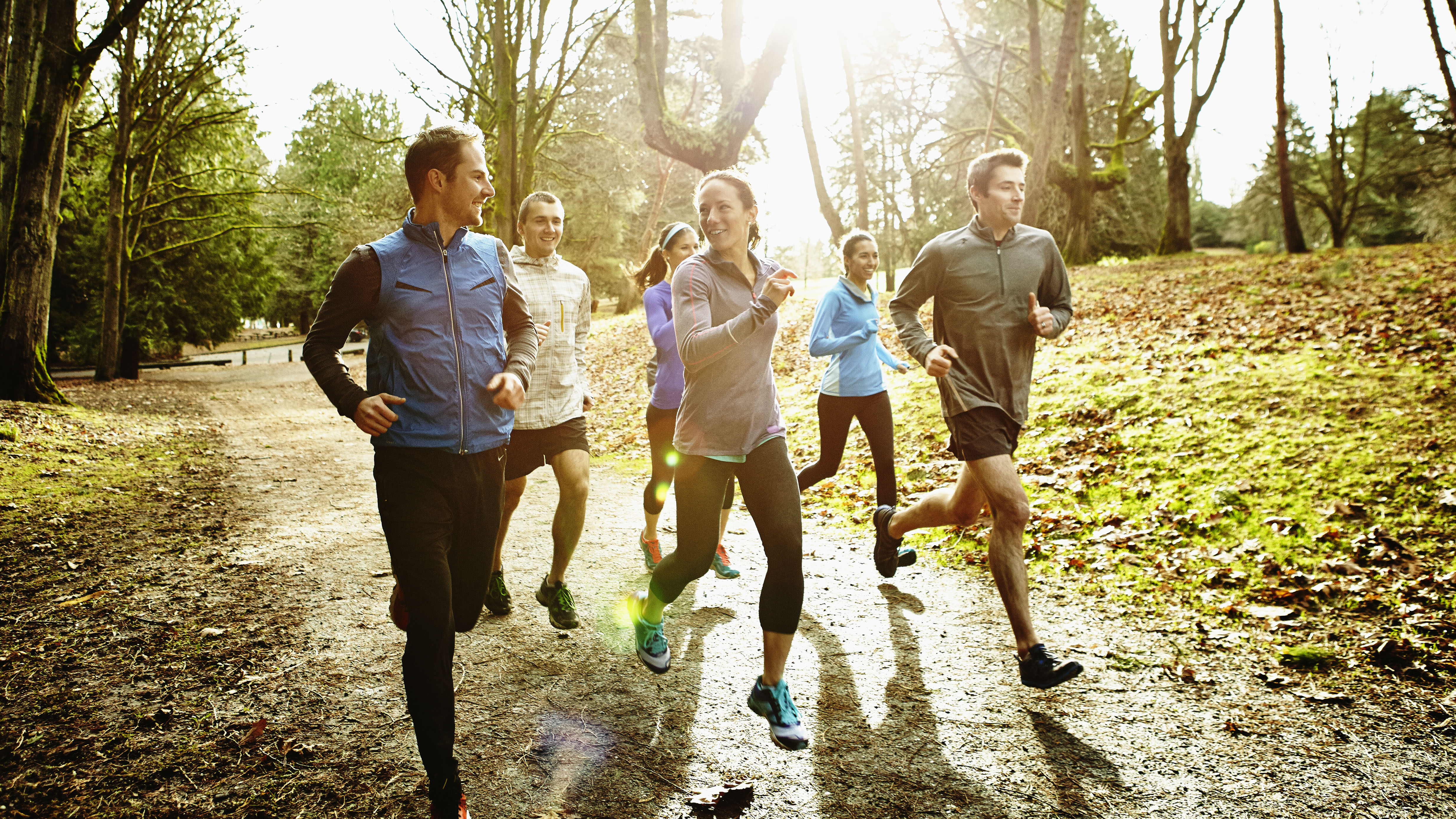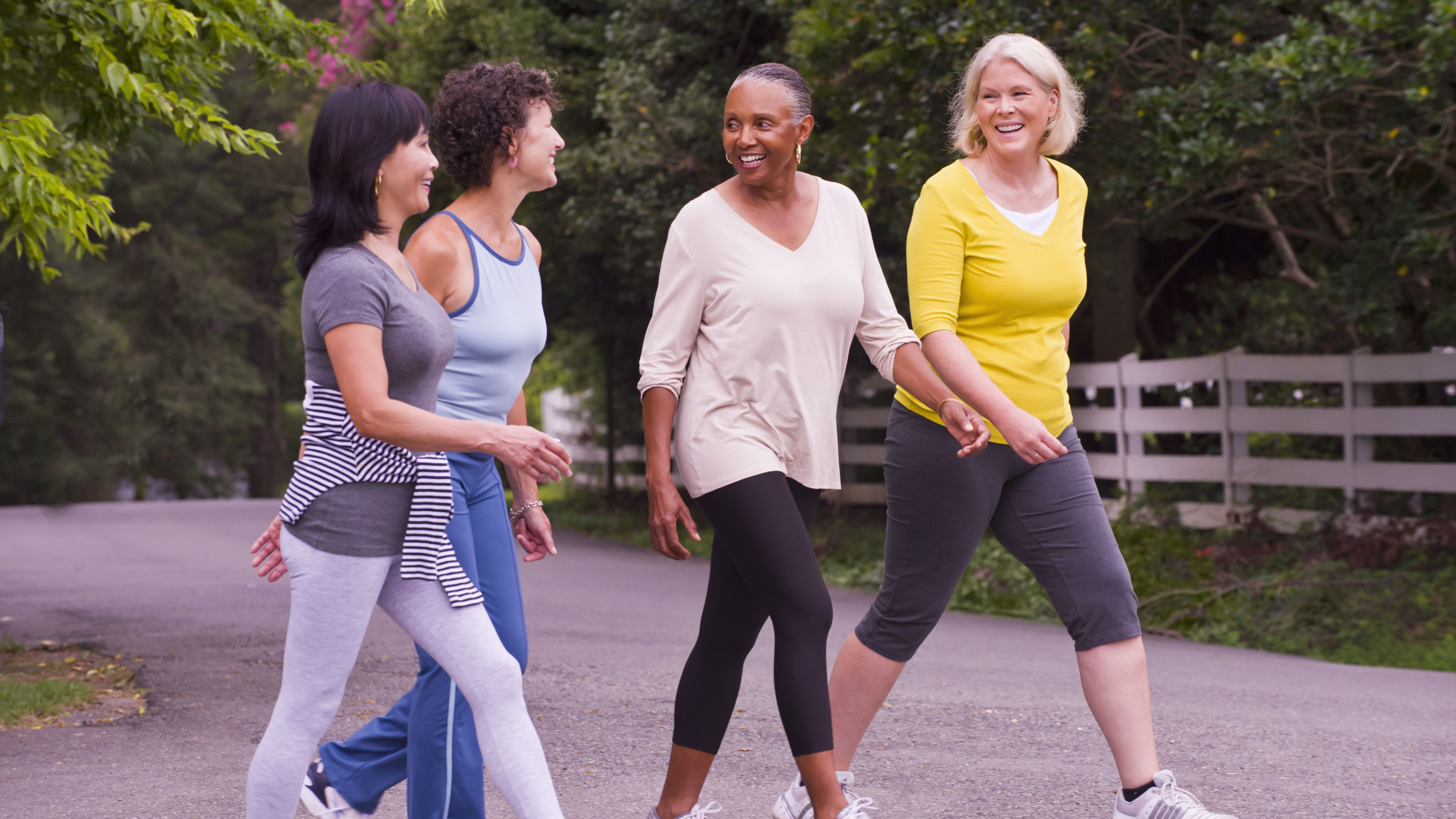Why is exercise important, according to the science?
We all know engaging in physical activity can do us the world of good, but why is exercise important? We asked an expert to find out more

Why is exercise important? On the face of it, this may seem like a fairly simple question – schooling systems across the world tell us exercise is a great way to stay fit and healthy. But what are the actual physiological benefits of raising your heart rate, and why are they so important to the human function?
Firstly, it’s important to understand what exercise is. For many, the phrase will trigger mental images of a session on the one of the best treadmills, a HIIT bike workout, or a trip to the gym, and this isn’t far wrong. A 1985 Public Health Report seeking to pin down the term settled on a definition of, “planned, structured, and repetitive bodily movement done to improve or maintain one or more components of physical fitness”.
So, whether you’re tracking your sets and reps while weight training for hypertrophy with the best adjustable dumbbells, or setting out on a 10K with the aim of burning calories, you’re taking part in exercise.
Now, on to the main event. Why is exercise so important?
“This list is almost endless,” Liam Walton, validation lead at sports engineering company INCUS Performance, told Live Science. However, with qualifications in Sports Biomechanics, Applied Sport and Exercise Science, as well as years working in the fitness industry, he is better placed than most to provide an answer.
Below, he explains some of the key reasons why exercise is so important and beneficial to human function, including the positive impact participation can have on positive longevity, proprioception and the reduced risk of lifestyle-related diseases.
Reducing the risk of lifestyle-related diseases
“One of the most important benefits of exercise is reducing the risk of developing lifestyle-related diseases such as diabetes or heart disease,” Walton says.
Heart disease is the leading cause of death for men and women in the United States, with one person dying every 36 seconds from cardiovascular disease, according to the Centers for Disease Control and Prevention.

Walton continues: “Daily exercise has been scientifically proven (in a 2019 study published in Oxidative Medicine and Cellular Longevity) to reduce the risk of heart disease, with 30 minutes of moderate exercise completed five times a week being enough to make a difference.”
Hearing that exercise can be beneficial to heart health may be nothing new to you. But why exactly does it have such a positive impact?
“The heart is a muscle, and like all muscles it needs regular stimulation to stay strong and healthy,” Walton says. “Without regular exercise, fatty material builds up in the arteries which increases your risk of suffering from a heart attack.”
A 2018 study published in Frontiers in Cardiovascular Medicine stated that “endurance training is associated with elevated levels of circulating high density lipoprotein (HDL) and, to a lesser extent, a reduction in triglyceride levels - both changes that can reduce the risk of coronary heart disease”.
It later adds: “Physical activity can ameliorate a variety of cardiovascular disease risk factors such as dyslipidemia (the imbalance of lipids) or hypertension (high blood pressure).”
Positive longevity
In essence, what we mean by the term “positive longevity” is exercising in the present to ensure you remain healthy and functional in the future.
“It may be difficult for younger people to imagine being elderly and a lot of people just workout for aesthetics, but exercise should be thought of as a long-term investment,” he says. “Being healthy and active now will prevent conditions such as osteoporosis (a health condition that weakens the bones, making them more likely to break) later in life, which can have a huge impact on mobility and quality of life when we’re older.”
Practicing positive longevity involves looking after your organs, muscles and joints. And what is one of the key ways of achieving this? You guessed it: exercise.

“You should think of your body like a car - it needs constant maintenance to keep running well,” Walton says. “For our bones and joints, resistance training could increase bone density (as suggested in this study published in the Medicine and Science in Sports and Exercise) meaning you are less likely to break or fracture bones as you get older.
“According to the World Health Organisation, falls are the second leading cause of unintentional injury deaths worldwide. By doing regular exercise and keeping your bones and muscles strong – as well as improving balance and coordination – you will reduce your risk of falls later in life.”
Proprioception
A factor that is often overlooked when considering the benefits of exercise, Walton describes proprioception as “the awareness you have of your body in a space”.
“It relates to coordination,” he says. “Someone with good proprioception is less likely to injure themselves through small accidents such as tripping down a curb and twisting an ankle, or cutting a finger in the kitchen.
“Regular exercise can really improve your proprioception and coordination, meaning if you are a clumsy person, you can fix that.”
Body composition
Arguably the best-documented impact of exercise is its potential to affect body composition, which comprises factors such as body fat percentage and muscle mass. Whether you’re hitting the gym to pack on slabs of muscle or slipping into the saddle of one of the best exercise bikes in an attempt to lose weight, many people are motivated to work out by the possibility of making changes to their frame.
After reviewing existing literature on the topic, a 2019 systematic review and meta-analysis published in the Journal of Obesity and Metabolic Syndrome stated: “The effect of exercise on obesity is larger in outward appearance (BMI and waist circumference) than in practical factors (weight and body fat percentage).”
However, exercise can still have a positive impact in preventing or reversing symptoms of obesity, with the study’s authors concluding: “We suggest that individuals with obesity should exercise consistently to achieve significant improvements in their health.”
The World Health Organisation (WHO) warns that “being overweight or obese can have a serious impact on health”.

It continues: “Carrying extra fat leads to serious health consequences such as cardiovascular disease (mainly heart disease and stroke), type 2 diabetes, musculoskeletal disorders like osteoarthritis, and some cancers (endometrial, breast and colon). These conditions cause premature death and substantial disability.
“What is not widely known is that the risk of health problems starts when someone is only very slightly overweight, and that the likelihood of problems increases as someone becomes more and more overweight. Many of these conditions cause long-term suffering for individuals and families.”
The WHO says becoming overweight or obese is “largely preventable” if individuals are able to “achieve an energy balance between calories consumed on one hand, and calories used on the other hand”.
The organization says: “To increase calories used, people can boost their levels of physical activity – to at least 30 minutes of regular, moderate-intensity activity on most days.”
This, combined with heightened levels of non-exercise activity thermogenesis (NEAT) and an appropriate diet, can help you achieve a calorie maintenance or calorie deficit, preventing or reversing symptoms of overweight and obesity.
How much exercise should you be doing per week?

This is a highly individualized question with answers that will vary from person to person. However, Walton does have advice for anyone looking to improve their health by incorporating a sustainable fitness routine into their weekly schedule.
“Official physical activity recommendations suggest that 150 minutes of moderate exercise
per week is enough to stay healthy,” he says. “However, it’s important to note that an overall sedentary lifestyle with a one-hour visit to the gym each day is not enough to combat the negative effects of said lifestyle. Instead, it’s best to make long-term changes to make your lifestyle more wholly active.
“This could include walking to work instead of driving, if this is possible. If not, try parking further away and walking the last 10 minutes. Or, if you use public transport, get off a few stops early and walk the rest of the way.
“Try to include a walk or even a run on your lunch break and travel under your own power (walk or cycle) as much as possible. Small changes really add up and are the best way to prevent the negative effects of an inactive lifestyle.”
Sign up for the Live Science daily newsletter now
Get the world’s most fascinating discoveries delivered straight to your inbox.

Harry Bullmore is a fitness writer covering everything from reviews to features for LiveScience, T3, TechRadar, Fit&Well and more. So, whether you’re looking for a new fitness tracker or wondering how to shave seconds off your 5K PB, chances are he’s written something to help you improve your training.
When not writing, he’s most likely to be found experimenting with a wide variety of training methods in his home gym or trying to exhaust his ever-energetic puppy.
Prior to joining Future, Harry wrote health and fitness product reviews for publications including Men’s Health, Women’s Health and Runner’s World. Before this, he spent three years as a news reporter with work in more than 70 national and regional newspapers.










